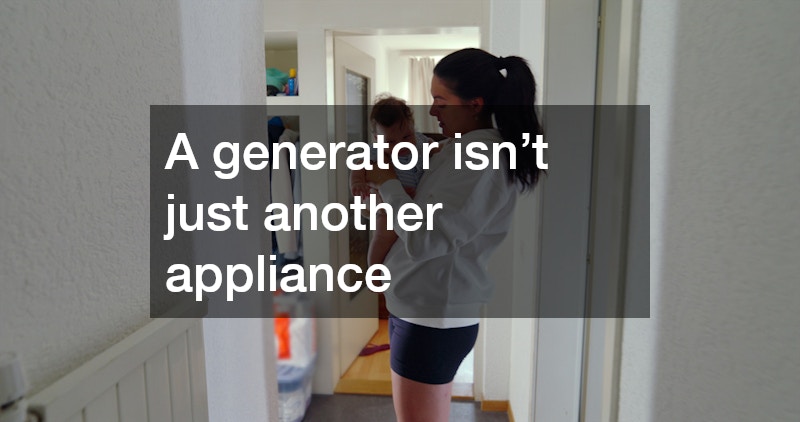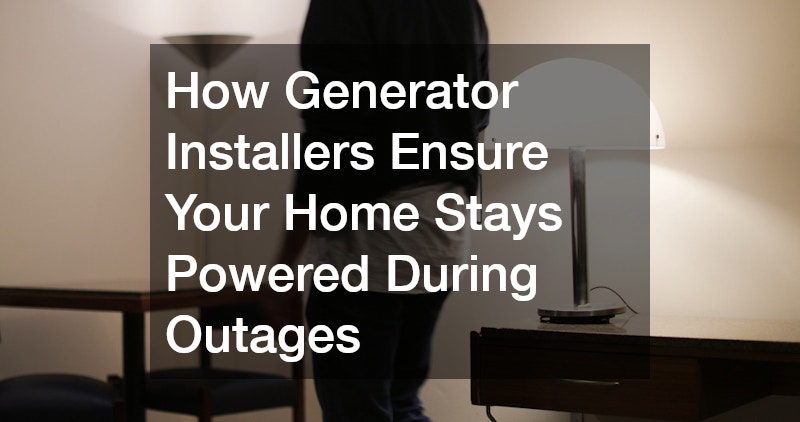When the power shuts off unexpectedly, most homeowners realize just how essential electricity is to daily living. From HVAC systems to refrigerators, medical devices, and work-from-home setups, reliable power matters. This is why many people rely on generator installers to create dependable backup systems. These professionals don’t just connect equipment—they evaluate your home’s needs, ensure safety, and build a system that performs reliably during outages.
Understanding What Your Home Really Needs
Before any equipment is chosen, installers start by examining the home’s electrical demands to ensure the generator will deliver the right amount of power without straining the system or wasting fuel. They look at factors such as the home’s size and layout, which circuits and appliances are most critical, whether you want whole-house coverage or just essential loads, the capacity of your existing electrical panel, and what fuel sources—natural gas, propane, or diesel—are available. This thorough evaluation helps prevent issues like overloaded circuits, inconsistent power delivery, and premature generator wear.
Recommending the Right Generator for Your Situation
Once the assessment is complete, installers help you choose the generator that best fits your home, budget, and expectations. Not all generators are equal, and picking the wrong type can lead to frustration later. There are two main types of generators:
-
Standby Generators – Automatic, permanent, ideal for long outages
-
Portable Generators – Manual, flexible, lower cost, but less convenient
Installers also consider noise levels, local climate, fuel efficiency, and long-term operating costs. For example, homes in colder climates may require specific models designed to withstand winter temperatures.
Safety and Code Compliance: The Hidden Work You Don’t See
One of the biggest advantages of hiring professionals is peace of mind. Electrical work—especially involving fuel lines—comes with serious risks. Generator installers are trained to follow strict safety standards that keep your home and family protected. Some key safety responsibilities that professionals handle are:
-
Ensuring the generator is placed in a safe, ventilated location
-
Installing transfer switches correctly to prevent backfeeding
-
Proper grounding to avoid electrical hazards
-
Running and sealing fuel lines according to code
-
Securing permits and coordinating necessary inspections
Most homeowners aren’t familiar with local building codes, but installers work with them daily. This avoids delays, fines, or unsafe setups.
Professional Installation and System Integration
Once everything is planned, the hands-on installation begins. This stage requires precision, especially when connecting the generator to the electrical panel and fuel source. The installation process includes:
-
Preparing and leveling the installation site
-
Setting the generator on a stable pad
-
Wiring and connecting the transfer switch
-
Running the gas or propane line
-
Programming the automatic startup system
-
Testing the entire setup under load
This thorough testing ensures the generator activates automatically, transfers power smoothly, and runs efficiently. It also gives homeowners confidence that the system will perform reliably during real-world outages.
Long-Term Maintenance Keeps Your Backup Power Ready
Even the best generator needs routine care, and professional installers often offer ongoing service plans to keep your system dependable year after year. Regular attention ensures the components stay clean, lubricated, and ready for sudden demand during an outage.
Maintenance typically includes oil and filter changes to keep the engine running smoothly, along with battery checks or replacements to ensure the generator can start instantly when needed. Installers also inspect the fuel system, verify proper airflow for cooling, and run load tests to confirm the generator can handle the electrical demands of your home. Many modern systems also require occasional software or firmware updates to maintain performance and efficiency. Without this kind of consistent upkeep, generators can fail at the worst possible time—especially after long periods of inactivity when issues often go unnoticed until an outage occurs.
Why DIY Installation Isn’t Worth the Risk
Many homeowners are handy, but generator installation isn’t a typical home improvement project. It involves electrical wiring, fuel systems, ventilation, and safety codes—all areas where mistakes can be dangerous. Some of the risks of DIY generator installation are:
-
Electrical fires
-
Carbon monoxide leaks
-
Backfeeding into the power grid
-
Voiding manufacturer warranties
-
Incorrect sizing or unsafe placement
-
Code violations and failed inspections
Professional installers provide expert knowledge, insurance protection, and warranties that safeguard your investment.
A generator isn’t just another appliance—it’s a major component of your home’s safety and comfort during an outage. Generator installers make sure the system is sized correctly, installed safely, and maintained for long-term reliability. With the help of experienced professionals, your home stays powered when the grid goes down, giving you peace of mind during storms, blackouts, and natural disasters.

